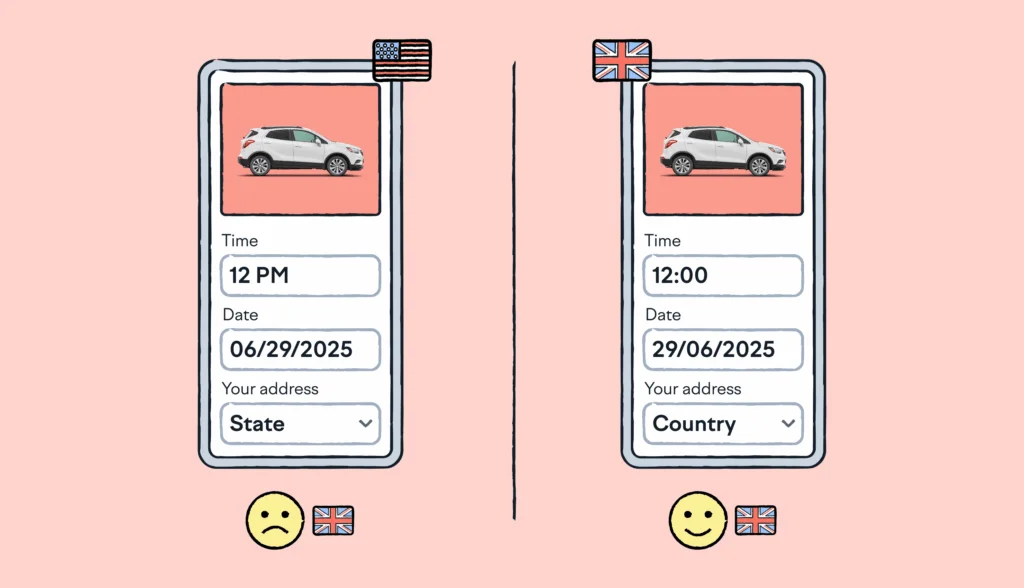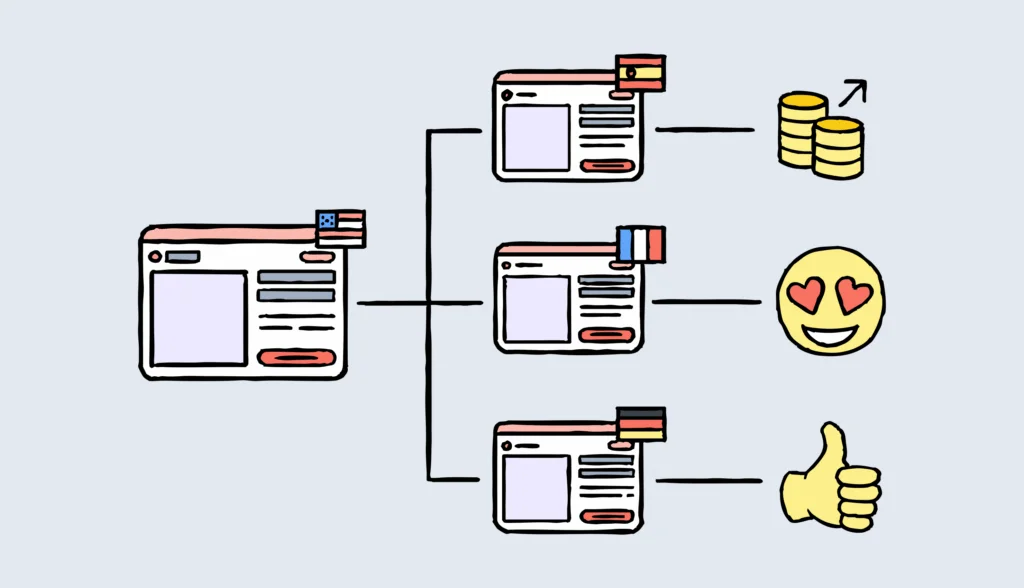Poor translations = bad user experience, brand erosion, costly/embarrassing mistakes, and potential legal issues.
This is why linguistic quality assurance (LQA) is so important. It’s a system of processes that ensures your translated content is error-free. But what does an LQA process look like and how do you create one? What tools can you use to facilitate this process?
Before we continue, let’s explain what LQA is and why it matters.
What is linguistic quality assurance (LQA)
Linguistic quality assurance (LQA) is the process of evaluating the linguistic accuracy and quality of translated content. It involves checking:
- Grammar and syntax: Checks that the translated content is free of spelling, grammar, and punctuation errors.
- Terminology: Verifies the correct usage of industry-specific or technical terms to maintain consistency.
- Cultural relevance: Ensures the content is culturally appropriate and resonates with the target audience in their native language.
Functionality: Checks the overall usability of the final product to ensure compatibility with local systems.
To understand the importance of LQA in the localization process, let’s look at Mercedes-Benz.
The company decided to enter the Chinese market in 2009 to target wealthier consumers. The decision made financial sense; China was the world’s second largest luxury market. Mercedes just needed the right name.
The company settled on “奔死” which reads as “bensi” — a term that phonetically sounds like “Benz.” However, the characters roughly translate to “rush to die.” Mercedes was unknowingly telling its customers to pass away. After realizing its mistake, the company later changed its name to “奔驰” (benchi) which translates to “run faster.”
The stakes for mistranslations can be high when you’re entering a new market. Mercedes could’ve avoided the embarrassment of mistranslating its name with some simple due diligence, which is where LQA comes in.
What matters isn’t the language — it’s the user that consumes the language
For people working in localization, it’s obvious why translation quality assurance matters; it’s the key that unlocks great multilingual customer experience. The problem? Most internal stakeholders don’t view it this way.
The key to getting people to care is refocusing our attention on the primary objective of a linguistic quality program: providing a great customer experience for end users around the globe.
Expert corner:
Nataly Kelly, VP of Localization at HubSpot has a great way of reframing how we talk about translation quality:
Instead of saying: “Machine translation alone won’t work for this scenario, because translation quality will suffer.”
We should say: “Machine translation alone won’t work for this scenario, or customer experience will suffer.”
Deprioritizing translation quality = deprioritizing customer experience. That’s how you should frame it when talking to your colleagues in customer support, product, marketing, and sales.
Improving how you communicate with others on key topics will allow you to accomplish your localization goals faster and tackle challenges when they inevitably arise.
The most common translation challenges

Some of the common challenges we come across when working with companies new to the localization journey are:
- Establishing shared goals with internal stakeholders: People across the company (content designers, product, and go-to-market teams) don’t share the goal of producing high-quality localized products, so translation quality often becomes an afterthought.
- Defining quality. There are objective ways to measure the accuracy and fluency of a translation. Many companies struggle with defining language quality, so they don’t know whether translations are good or bad.
- Including customer feedback in quality evaluations: The number of mistakes made in a translation judged by a linguist is less important than your customer’s experience. Many companies find it difficult to include customer feedback as part of their equality evaluation (unless they are called out on social media).
- Process: They have no clearly defined processes for collating bugs and feedback from internal stakeholders, customers, and partners to ensure critical issues are fixed by launch.
- Systems: There are no tools and automations in place to support languages in maintenance, make continuous improvements, and launch new languages efficiently.
- Regulatory compliance: They often have no processes in place to ensure localized content complies with local regulations and standards. However, any inaccuracies can lead to potential legal issues.
Resource availability: Finding qualified translators with the necessary language skills can be difficult for less common language pairs. As a result, companies may settle with translations that are just “good enough.”
Defining and categorizing translation errors in the LQA process
While it may seem obvious what translation errors are, we think there’s room to define what we mean within the context of an LQA process.
Broadly speaking, a translation error is any lack of consistency between the source and target text. Errors can be divided into objective or subjective mistakes:
Subjective errors:
- Literal translations are used to describe a word-for-word translation of the source text. They sound unnatural and don’t convey the intended meaning. Identifying and correcting these in the LQA process ensures the final product is fluent.
- Mistranslations are incorrect translations that mislead readers.
- Undertranslation is giving less information in the translation than is in the source text.
- Overtranslation is giving more information in the translation than is in the source text.
- Omission means dropping a word or words from the source text in the translation.
- Cultural nuance not being taken into account. Great translation requires an extensive understanding of local regulations, complex terminology, and cultural context.
- Style guides not being respected. A glossary and style guide are vital components of the language assets that you will build with your language partners to ensure consistency of niche terminology, brand elements like taglines, style and voice, and incorporate target audience information.
Objective errors:
- Missing translations are sections of content that have not been translated from the source language, meaning users may be missing key information.
- Spelling, grammatical, and syntax errors are any mistakes in the spelling of words or sentence structure of a translated text.
- Glossary and terminology inconsistencies are the incorrect or inconsistent use of certain terms.
- Spacing, typos, capitalization, and hyphenation are relatively minor errors but ones that can still affect the overall user experience.
How do you categorize these types of errors when localizing content? Here, we can take a page from Slack, which has three bug categories for translation errors: functional, linguistic, and won’t fix:
- Functional: These issues include errors, such as cut-off sentences or words or phrases that show up in English instead of the target language. These types of errors are sent to the engineering and design teams to address.
- Linguistic: These types of errors include typos, grammatical errors, and misplaced placeholders. When you’re translating meaning rather than words, linguistic issues can also include not respecting style guides and brand voice.
Won’t fix: These include issues with placeholders and text rendering in English (or the source language instead of the chosen locale). It’s important to categorize these because you don’t want to waste time and money on reporting a missing translation if it’s just a bug.
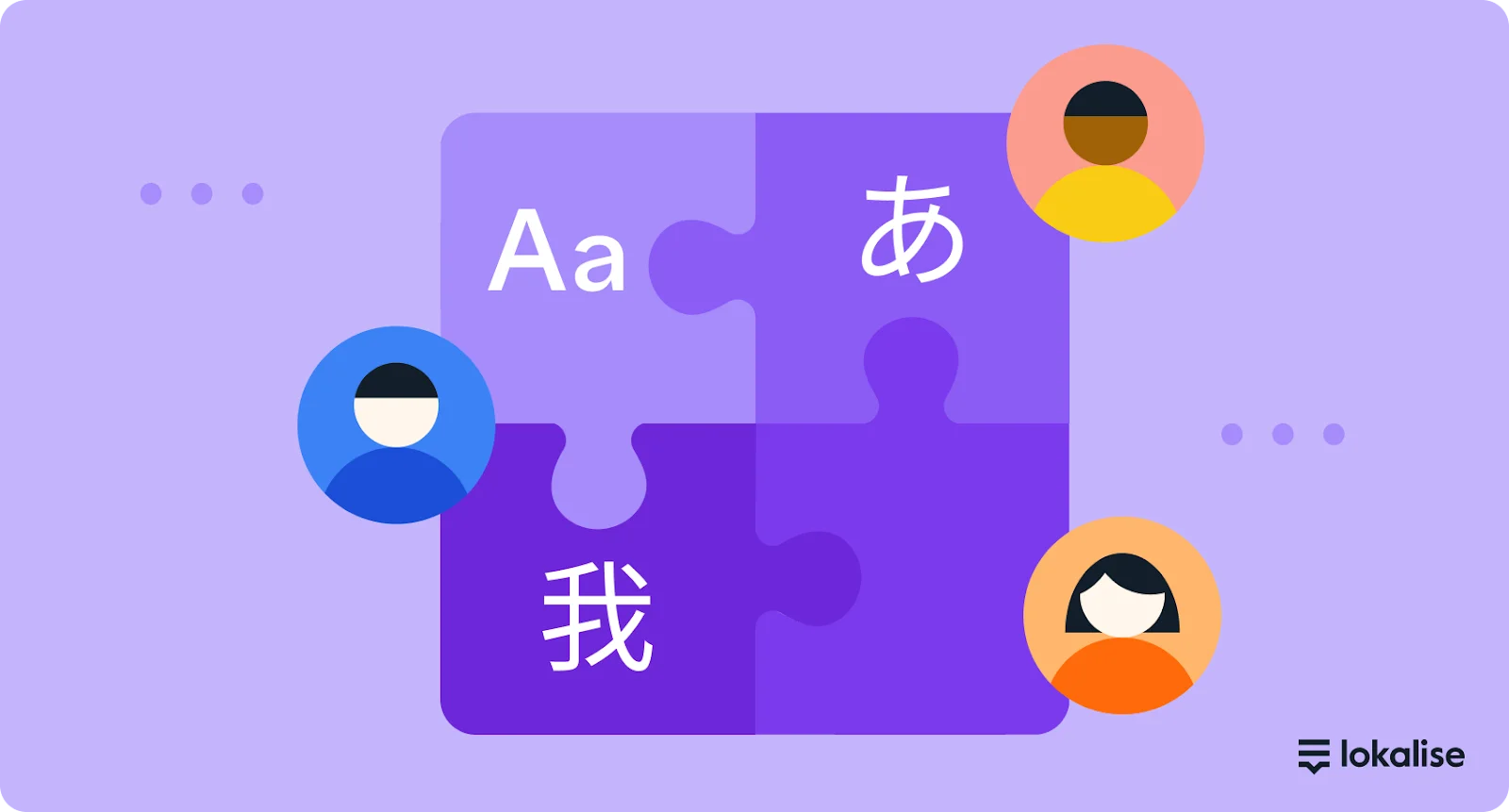
Defining the categories for translation errors and educating stakeholders is important so that when errors occur, the right person can escalate the issue appropriately.
And then what? Building the LQA process, team, and systems
Once you’ve made a commitment to creating a great multilingual customer experience and have clearly categorized translation errors, you can build the processes for error handling, translation review, and continuous improvement.
To ensure a smooth launch of a product in a new language, let’s look at the core components of LQA starting with process.
Process
The LQA process consists of several key steps. Get these right to ensure translated content meets high standards.
Define your style guide
Translation quality is often subjective. A translated text may sound fine to one person but unnatural to another. Remove subjectivity in the translation process by creating a well-defined style guide. This will help ensure consistent terminology use and maintain your brand voice across translated works.
Note: While it’s important to have objective standards by which quality can be measured, we believe this is less important than understanding what quality means to your customers. Localizing surveys into customer languages and asking them about their experience is a great place to start (and the survey design doesn’t need to be complex).
Address challenge points for new languages
When launching in a new language, do a kickoff overview for cross-functional teams on what they need to know about the market.
Addressing a lot of potential challenge points (e.g., date and time formatting, or plurals and possessives) and providing teams with some initial knowledge of the language will make it easier to address them as work begins. For example, dates in Japan are typically written using the YYYY/MM/DD format and time is expressed in a 24-hour format. There are also specific rules for plurals that differ significantly from English.
When you kick off translations, prioritize areas of your product that are difficult to localize. What are the areas where translations must match across platforms? What are the potential challenges? Translating these first means you have more time to ensure they’re translated well.
Track, measure, report, and improve the areas your customers care about
LQA scores are calculated based on the number of mistakes made in a translation, as judged by a linguist.
Traditional LQA programs use a separate vendor to evaluate the translations of a primary translation vendor. If you don’t trust the quality of translations from your language partner, you can hire a vendor for LQA, or work with a partner you trust.
Mistakes are still important. But here’s what’s more important: your customer. Obsessively tracking user experience isn’t always straightforward and cheap. However, neither is paying for a third-party LQA program.
User research using surveys and focus groups is the most useful method of improving what is important. Work with your UX team to include the multilingual customer experience in their research. There are also research partners out there that can help with this. Focus groups are even more insightful when it comes to digging into your customers’ experience if budget allows.
Team
Once your company has the right processes in place, you need the right people to continually refine them and make improvements. Team structure varies wildly from company to company, but the localization process typically involves four primary groups of stakeholders.
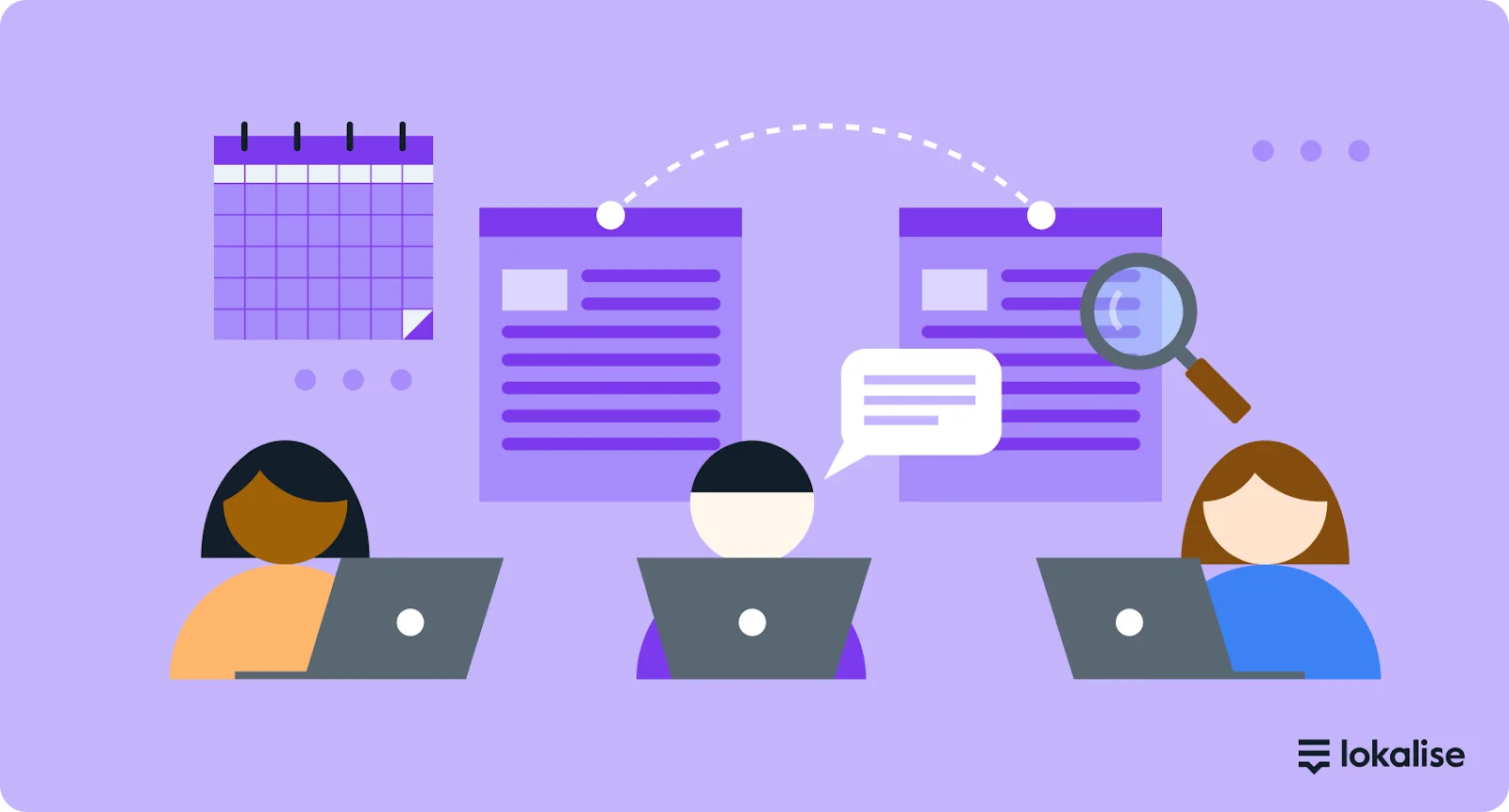
Here’s how each of them can impact quality:
- Designers and software developers: Designing and building your product and ensuring it looks and feels how it should resonate with your global customers. Developers are also responsible for initiating the localization process by adding string identifiers (i.e., keys) to the product code, as well as fixing bugs and taking full care of the back-end of your digital product.
- Product, project, and localization managers: Educating all stakeholders in the localization process about your product while also identifying requirements, tools, technologies, and the overall strategy.
- Copywriters and translators: Preparing all the content that needs to be localized and/or participating in transcreation to ensure it’s well adapted to the target market.
- QA specialists and reviewers: Establishing a rigorous review process through proofreading and localization testing in order to deliver the agreed translation quality.
Note: You don’t need all the above stakeholders to have an efficient translation process. However, you do need an owner to keep track of the end-to-end process. Ideally, this person can be responsible for building relationships and educating internal stakeholders. Cross-functional collaboration is needed more than ever not just between localization teams and design teams, but between all internal teams focused on the product life cycle.
Systems and tools
There are two key elements to building a well-localized product:
- The right people
- The tools to help these people do their best work (it’s especially difficult to manage a growing group of people without integrated tools and data that flows into a single workspace)
Usually, translation workflows are managed using a patched-together system that is siloed and relies heavily on good old spreadsheets.
Mario Pluzny, currently the Localization Program Manager at Twitter, shares the biggest challenge around ensuring quality without the right tools and processes:
“The quality of global content cannot be assured without everyone looking at the same source. I think that versioning is one of the biggest challenges we face in localization. Even once things are in translation, the English source will often still change. The use of a translation management system (TMS) will allow you to make changes more easily.”
Here’s what the review workflow looks like when using a TMS — software that lets you track and manage the localization process in one place — like Lokalise:
- Create custom statuses to identify multiple review steps (e.g., copywriting review, subject matter expert review, regulatory review, internal quality checks, etc.)
- Add internal and external project contributors as team members
- Enable automated notifications for changes like translations being updated or reviewed, keys added or modified, tasks created or closed, and more
- Apply filters for new empty keys that require translation, and unverified keys, where the source has been updated and translations require updates
- Apply appropriate custom statuses to the filtered selection of keys using bulk action
- Create tasks from the filtered selection of keys
- Predefine review cycles by creating chained tasks that will trigger once the previous one is completed
The above example is a simplified workflow. You can optimize it further by building a layer of automation on top. The obvious candidates to begin with when automating are repetitive, manual tasks like email/Slack notifications and QA checks.
But the possibilities don’t end there.
With Lokalise, you can use automations to streamline your localization workflows and boost productivity. For example, you can create a rule that uses machine translations (MT) from either Google Translate, DeepL, or Microsoft Translate.
As shown above, you can define the minimal change required (35% in this case) of the monitored language to trigger the automation. You can use this time-saving feature to translate simple sentences.
Lokalise also offers automated spelling and grammar checks for over 20 languages.
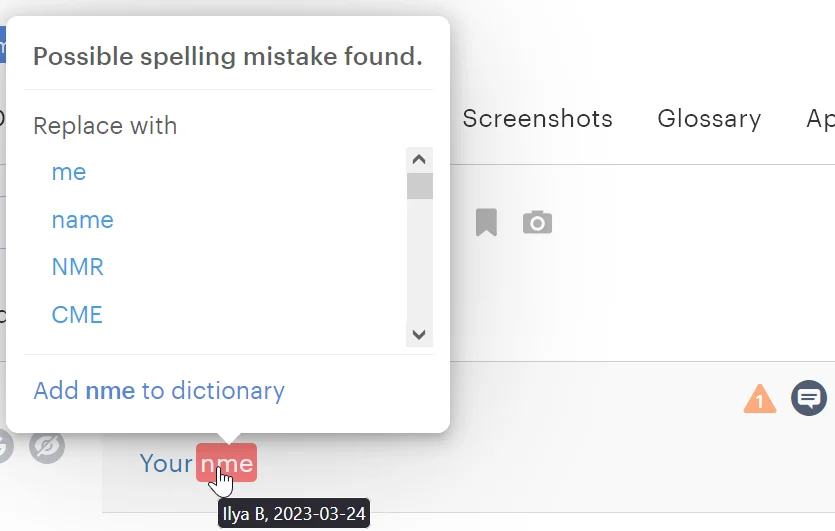
If the tool spots a spelling error, you can either choose the correct term or add it to your dictionary for the current project.
In Lokalise, you can build simple automated processes that are natural, fully integrated parts of your product releases and quality management systems.
We’ve already touched on some of the tools you’ll need, but the key features of a TMS that will help you build and implement a linguistic quality program are:
- Visual context: Rich visual context through Sketch, Figma, and Adobe XD integrations, plus the possibility to filter translation content by screenshot is another powerful way to support precise, meaningful, and consistent translations.
- Glossary: To allow you to keep terminology consistent across different content buckets.
- Translation memories: To support a coherent tone of voice that is important for strong brand messaging, but also relevant for keeping your translation costs down.
- Automated QA: Built-in quality assurance checks significantly improve the speed of late-stage software testing as they reduce redundant technical errors such as any in placeholders, numbers, and HTML tags, and help translators to focus on consistent translations.
- Over-the-air SDK: Allows you to push product updates post-launch and make improvements on the fly.
In the past, global brands lacked the tools to launch updates quickly and make continuous improvements. Today, companies use these tools with systems like continuous localization and design-stage localization to continuously launch new languages and improve existing ones.
For example, Revolut ships localized products in 30+ languages with the ability to quickly make changes when errors occur:
“In the case that some translation is not right, or any other update is necessary, the team can quickly jump on, make the necessary changes, and release the update with the over-the-air SDK.”
Note: This post doesn’t cover design-stage localization. If you want to build a unified workflow that starts at the design stage, get our complete guide.
A step-by-step LQA process
Now that you have your processes, team, and systems and tools in place, it’s time to put it all together. Here’s an LQA process you can emulate to maintain high quality standards for your translations.
1. Pre-translation preparation
The pre-translation phase is key to successfully launching in a new market and overcoming potential challenges.
Define project requirements
Outline the scope of the localization project. Who is the target audience and what are the languages involved? Are there any specific guidelines or standards that need to be followed? Be sure to outline the timeline and deliverables of the project.
Next, identify the stakeholders who will make up your localization team. These roles include:
- Translators
- Software developers
- Product and project managers
- Copywriters and marketers
- LQA specialists
Make sure that each member understands their responsibilities and how they will contribute to the success of the project.
Prepare reference materials
The last thing you want is to leave your translators to their own devices.
Provide translators with comprehensive reference materials, such as style guides, glossaries, and other documentation to help them maintain consistency across localization projects. Be sure to identify localization challenges (e.g., using industry-specific terms) and provide guidelines on addressing them.
With Lokalise, you can easily create and share a style guide with your team.
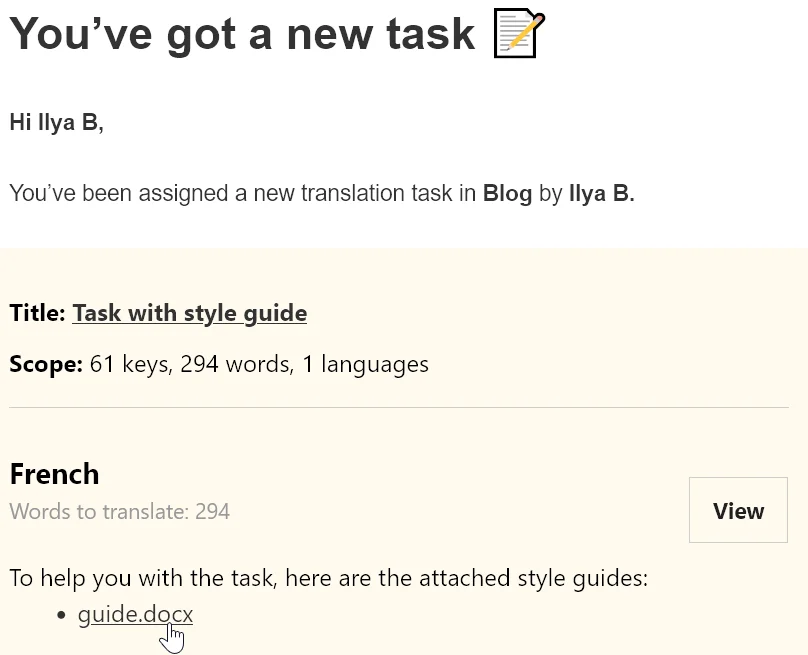
Translators can access the style guide and track the progress of their work.
2. Translation phase
Next up is the translation phase.
Pick your team
You need a team of experts to localize your content. Look for translators who are fluent in the target language and have a strong understanding of the subject matter. They should be able to provide insights into the linguistic and cultural relevance of the translated content.
Establish a “quality pillar.” This team will be in charge of maintaining quality standards at scale. Develop a scoreboard for each language so that all quality evaluations take place objectively, with clearly defined rules instead of opinions.
For new languages, this pillar will run linguistic quality assurance (LQA) processes, intaking errors and feedback from internal stakeholders, partners, and beta testers.
Use the right tools
Localization projects are coordinated efforts. Without the right tools, project managers and translators can easily lose track of their work.
A TMS like Lokalise can help streamline the localization process, keep your team aligned, and improve visibility across your projects. It even features built-in AI translation and machine translation capabilities. Simply provide context and get natural-sounding translations in just a few clicks.
Click here to see how Lokalise AI works.
3. Review and editing
The review and editing phase is a critical step, as it helps prevent embarrassing translation gaffes.
Perform LQA checks
While machine translations can help you lower localization costs and translate content at scale, the human element is a key component of LQA. Machine translation post-editing (MTPE) combines the efficiency of machine translations with the linguistic expertise that human editors offer.
Linguistic experts should review grammar, syntax, and style. They should also review the cultural relevance of any localized content. In some cases, you may need to call in other experts (e.g., a medical expert to review medical content).
Of course, human reviewers can still make mistakes. With AI LQA, you can perform an LQA check on your translations and it will automatically identify linguistic issues. The tool even provides AI suggestions.

Implement revisions
Consider bringing on actual users to do a “test run” of your content. Collect their feedback and make any necessary revisions to correct errors or inconsistencies. Make sure to update your style guides and other reference materials.
4. Functional testing
Functional testing involves ensuring that translated content works in the intended context.
Check website functionality
Translating text to another language can “break” existing designs. For example, “Buy now” translates to “Comprar ahora” in Spanish. While the English version can fit inside a button, the Spanish version may not.
When localizing content, make sure to perform functionality tests. This includes checking that hyperlinks and user interface elements function properly.
If translations are too long, you can use Lokalise AI to create shorter versions.
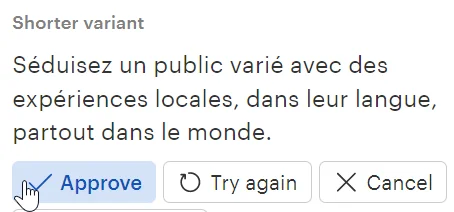
This helps you quickly generate translations that display properly across different platforms and devices.
5. Final approval and sign-off
Before you publish the translations, there are a few things left to do.
Perform a final review
After you conduct an LQA check and implement revisions, you’ll perform a final review and double check that all issues were addressed.
With a TMS like Lokalise, you can collaborate with your team and keep discussions in one thread. You can also add comments to individual translations—offering a clear example for anyone wondering what are translation services in practice.
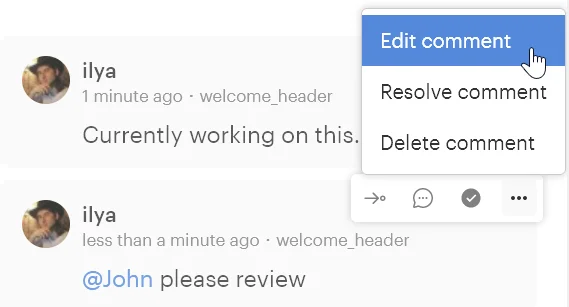
Once everything looks good, you can prepare the localization for release and deliver the final product.
6. Post-translation quality checks
Even after performing a final review, your job isn’t done yet.
Monitor user feedback
Translation mistakes can still fall through the cracks. Get feedback from your users to identify any issues and address them promptly. You’ll also want to collect usage data, so your team can quickly rectify any functionality issues that may impact the user experience.
Assess effectiveness
Remember that LQA is a constant work in progress. How effective was the LQA process? What steps can you improve and make more efficient? Get feedback from the rest of your team and document any lessons learned.
LQA best practices
Performing LQA checks on your translated content isn’t always an easy process. Follow these best practices to set yourself up for success.
Engage stakeholders early and often
Identify the key stakeholders, including project managers, marketing teams, and product owners. Maintain regular communication throughout the LQA process. Set clear objectives and define the scope of the project to keep everyone on the same page.
Utilize collaborative platforms
Localization projects have a lot of moving parts, making it difficult to keep track of everything.
With Lokalise, you can manage your translations, track progress, and share feedback in real-time from one place. These features enable efficient collaboration throughout the localization process.
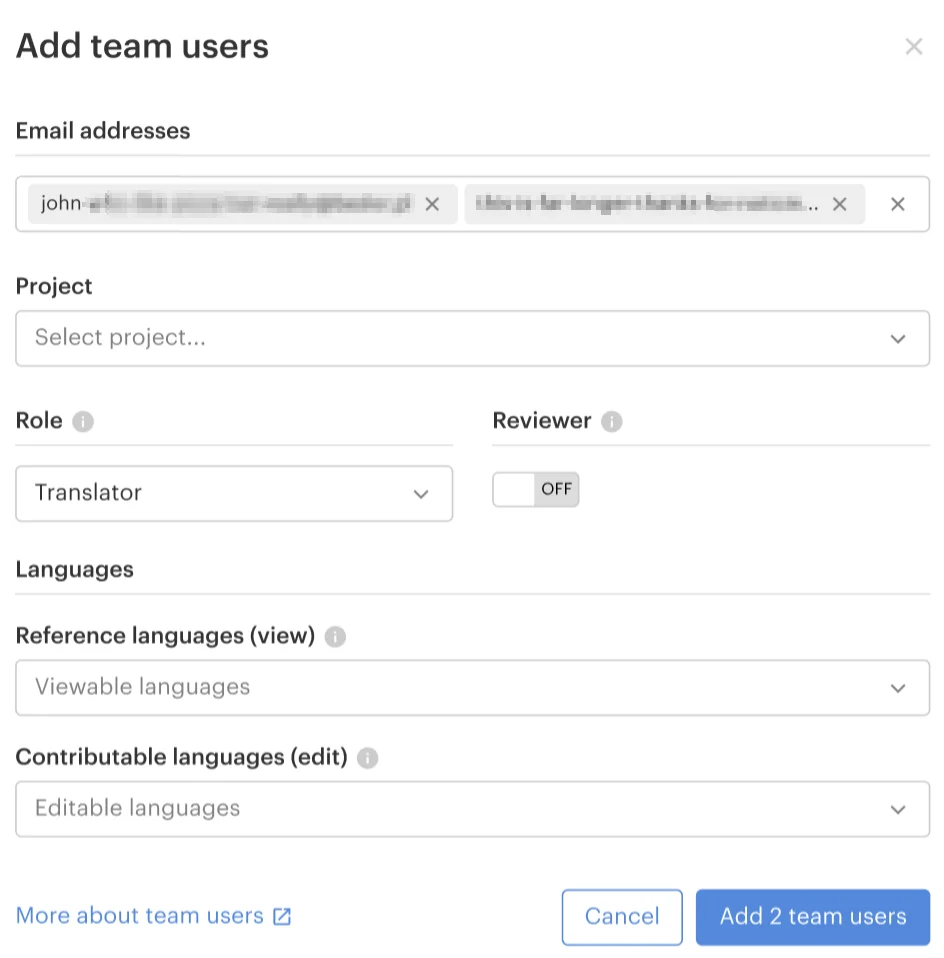
As your team grows, you can add and manage users and assign different roles.
Standardize quality metrics
Define quality metrics to maintain uniform quality across your localization projects. Examples include:
- Accuracy
- Quality score
- Cultural appropriateness

Create a scoring system to quantify different aspects of the localization quality. Standardize the review process and provide training to ensure reviewers consistently follow the system.
Automate repetitive tasks
Your time can be better spent elsewhere instead of performing the same tasks. With automations in Lokalise, you can automate your workflows and reduce turnaround times. This means linguists can focus on the more complex and nuanced aspects of localizing content.
Promote a quality-focused culture
Foster a culture that prioritizes quality at each step of the localization process. Encourage your team to take ownership of quality and provide regular training to enhance their skills. Be sure to also recognize and reward those who contribute to maintaining high linguistic quality.
How Lokalise can help streamline your LQA process
Ultimately, language quality shouldn’t be treated as another checkbox to complete at the end of a project. More than a review step for translations, you need a “quality mindset” (and the right tools) that include language as a key component of the end-product experience.
Here’s how Lokalise can help.
With Lokalise, you can apply translation memory, a database of approved translations for common sentence pairs, and pre-translate target languages that meet certain thresholds (e.g., 95% match), making it easier to understand “what is translation” in a practical, efficiency-driven context.
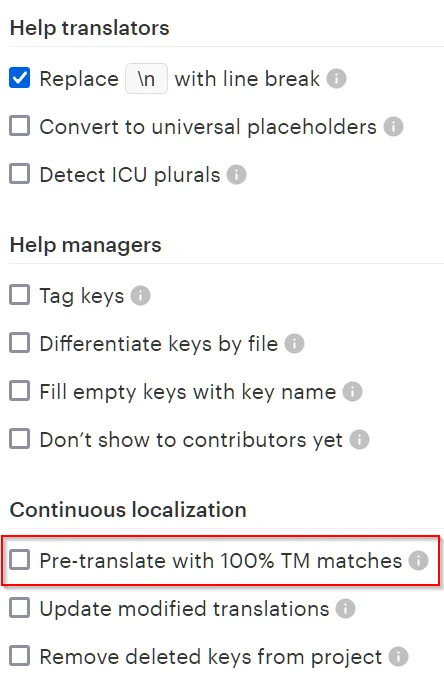
Using translation memory eliminates the need to translate the same phrases.
The stakes are high when localizing for a global market. Poor localizations can damage your brand reputation and affect the user experience.
Lokalise includes a host of QA checks that automatically check for things like:
- Grammatical errors
- Inconsistent placeholders
- Different numbers
- Trailing spaces
- Double spaces
And more.
You can also use AI LQA to automatically identify linguistic issues and have it generate a detailed report with detected errors and their severity levels.
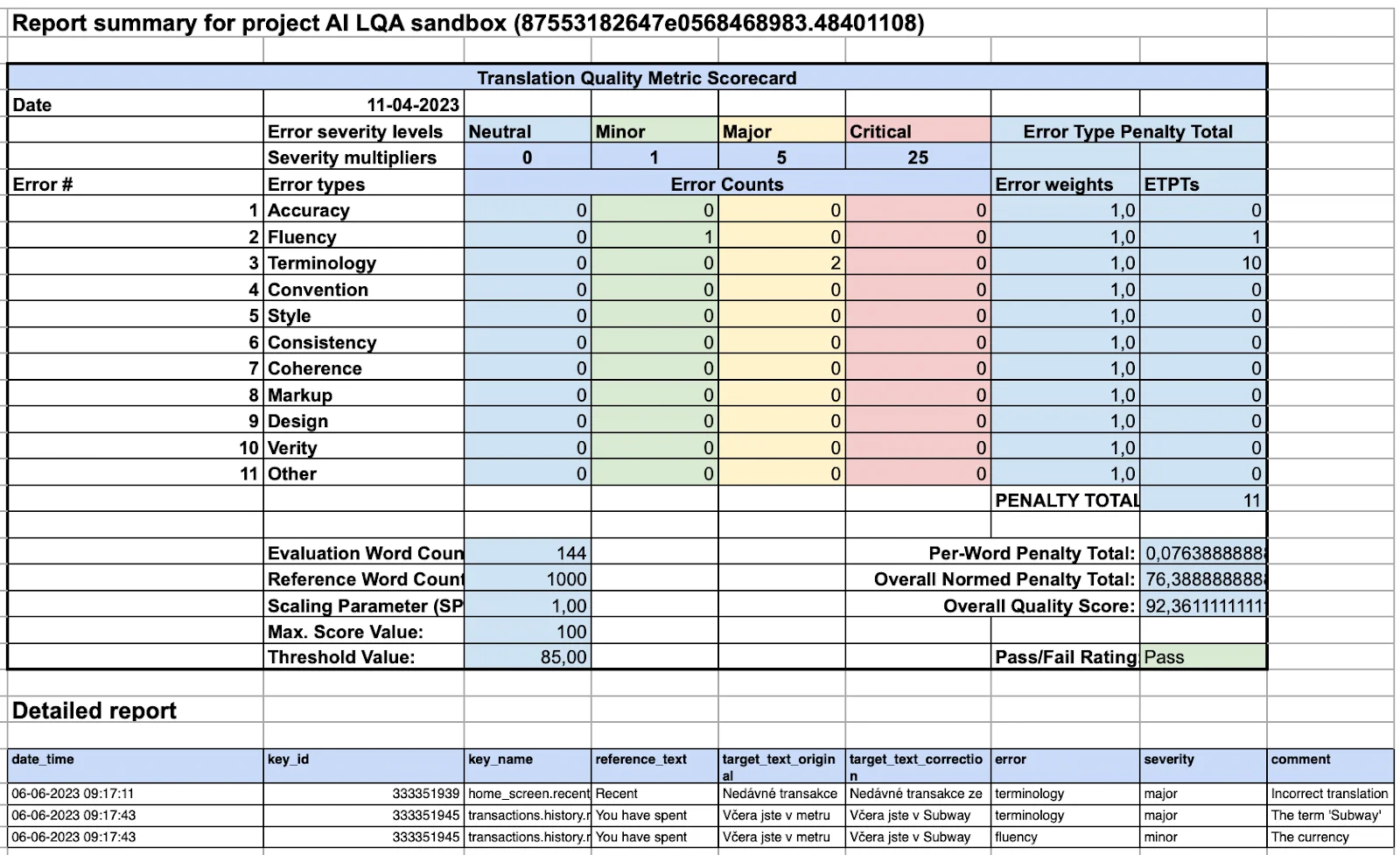
Finally, Lokalise provides automation tools that save your team valuable time and keep your localization projects moving in the right direction. For example, you can set a rule that translates assets in Figma using machine translation without leaving the design tool. This is just one example of how you can use automation in Lokalise to speed up your workflows.
Build an LQA process that delivers quality translations
Expanding into new markets can help your company reach more customers and unlock revenue opportunities. But as we’ve seen with Mercedes, any mishaps in the localization process can reflect poorly on your company. The right processes combined with tools like Lokalise can help you create an LQA process that delivers accurate and culturally appropriate content.
Start a free 14-day trial of Lokalise or check out our interactive product tour.




